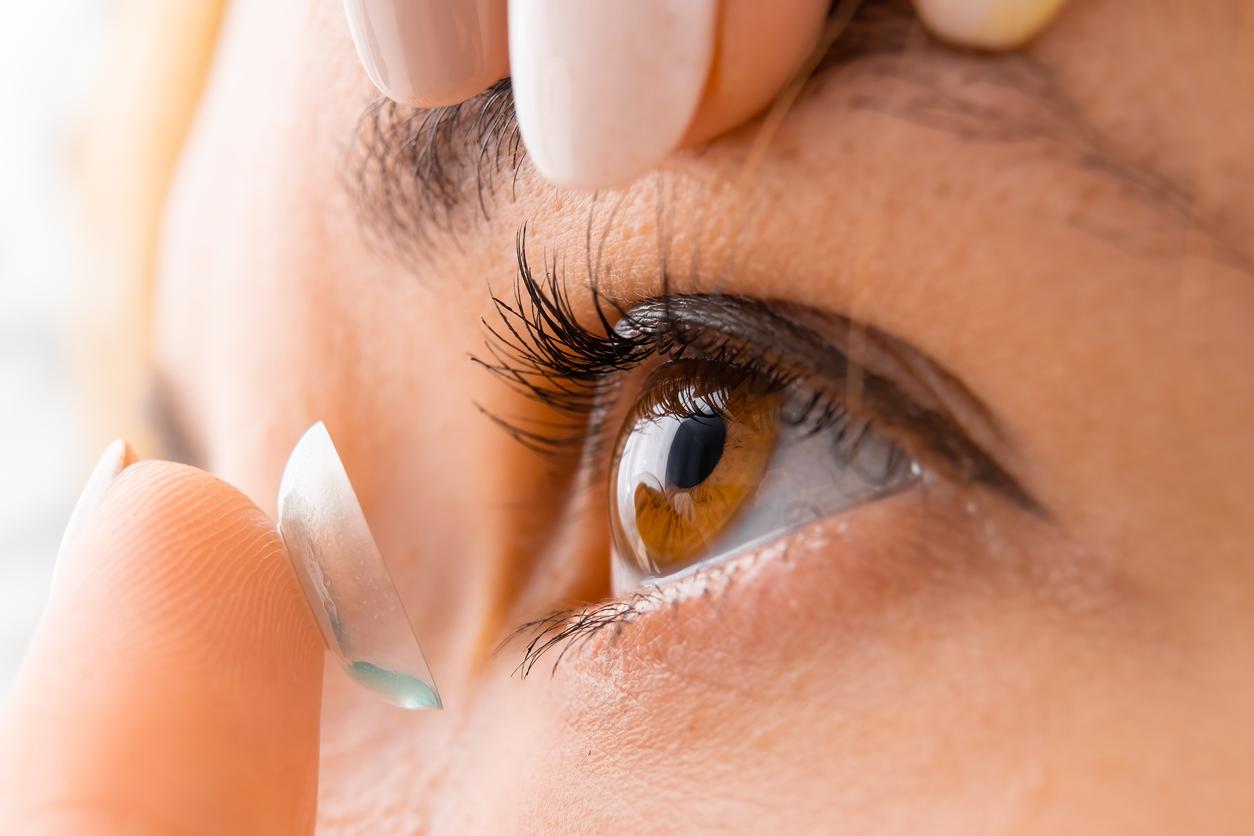Eighteen references of contact lenses contain carcinogenic pollutants, alert American researchers.

- 18 contact lens references had concentrations of organic fluorine, a marker of PFAS, between 105 and 20,700 parts per million (ppm).
- PFAS, per- and polyfluoroalkyl substances, are a large family of more than 4,000 chemical compounds.
- These so-called “eternal” pollutants can cause cholesterol levels to rise, lead to cancer, and cause effects on fertility and fetal development.
Myopia, hypermetropia, astigmatism, presbyopia… Contact lenses, flexible or rigid, correct the vast majority of visual defects. In a recent study, American public health blogs called mamavation And Environmental Health News have demonstrated the presence of per and polyfluoroalkyls, better known as PFAS, in several contact lenses. As a reminder, this is a large family of more than 4,000 chemical compounds that can be found in many everyday products, such as technical clothing, fire-fighting foam or even food packaging.
100% of contact lenses had PFAS indications
As part of their work, relayed by The Guardianthe researchers sent 18 references of soft contact lenses from three brands to a laboratory so that it could analyze them. “What our lab found is somewhat concerning, as 100% of contact lens products sent out came back with varying levels of organic fluorine, a marker for PFAS,” the team reported. According to the results, the concentrations of organic fluorine recorded by the laboratory were between 105 and 20,700 parts per million (ppm). The authors indicated that 22% of the contact lenses tested contained more than 18,000 parts per million (ppm) of organic fluoride and that 44% of the products had more than 4,000.
PFAS in contact lenses: what are the health risks?
“The eyes are one of the most sensitive parts of the body, so it is concerning to see the presence of organic fluoride, which is likely a type of PFAS, in all the soft contact lenses tested”, said Linda S. Birnbaum, a researcher at Duke, North Carolina and Yale universities. As a reminder, PFAS are considered “concerning” for our health. According ANSESthey cause an increase in cholesterol levels, can lead to cancer, cause effects on fertility and fetal development. “They are also suspected of interfering with the endocrine (thyroid) and immune system.”
At this time, scientists are unable to determine how much PFAS enters the body after exposure to eyeballs. However, “We know that exposure to PFAS is possible based on some research looking at dermal exposure in animals.”















